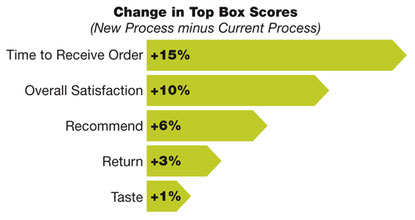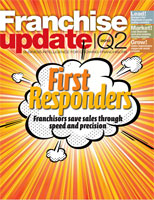Responding to Feedback: Eliminate Root Causes To Improve Key Performance Scores
Good or bad, customer feedback is a gift. So much so that almost every franchise system asks customers to comment on their experiences, and even to rate them.
There are predictable reasons customers want to give you feedback. Some will have bad experiences. You can bet on it. And they'll want to tell you--and then expect you to do something about it. But only a few franchise systems are really good at anticipating and responding to this challenge.
What I mean is that a lot of franchise companies will respond to complaints, but only in a very tactical way. They install systems to alert them when customers complain. Managers are then held accountable to call the unhappy customers and "solve the problem."
Of course, this kind of one-off, after-the-fact approach to problem-solving is not nearly as effective as identifying the root causes of recurring problems. The best-managed companies systematically eliminate the root causes of problems that they learn about through customer complaints. Here's an example from a regional sandwich chain that started with a big problem around the issue of slow service. But the story ends with happier customers and increased revenue. All from analyzing their customer feedback to create their "get-well" plan, not just with apologies, but by eliminating the root causes of customer dissatisfaction--and defection.
1) Situation. For most fast-casual restaurants, speed of service is a critical part of business and a key driver in creating satisfied customers. So when this medium-sized chain discovered they were underperforming in this critical area (they were dead last in SMG's Benchmark Database for fast-casual concepts) they knew they had to take action. But before they could fix the problem, they had to know what was causing the sluggish service.
2) Action. To find the source of the slowness, we conducted a text analysis on the open-ended responses to their customer satisfaction survey. With more than 2,000 customer comments just about speed of service, we were able to identify four different subcategories: receiving the order, placing the order, payment, and delivery. We also analyzed the sentiment of each comment and categorized them into three types of customer feelings about their experience: positive, neutral, and negative.

In the eyes of customers, the most negative aspect of speed was the time it took to pay. As you can see from the first graph, 28 percent of customers said something negative about the speed of the payment process. Here are a few actual comments: "It takes too long to pay for my meal."; "I was done with my chips before I even paid!"; and "Why do I need to pay after I get my sandwich?"
When customers mentioned issues with the speed of payment, their Likelihood to Return scores were 15 percentage points lower than when customers didn't mention speed of payment. This was significantly worse than scores when customers mentioned other problems with speed. These findings indicated that improving or changing the payment process would eliminate one of the root causes of customer defections.
3) Results. So the company tested a new process in just a handful of locations. Instead of customers ordering and paying after receiving their meal, customers would now order, pay, then receive their meal. This really wasn't very hard to change.
Restaurants that implemented the new payment process quickly saw higher scores in Speed of Service, Overall Satisfaction, Likelihood to Return, and Likelihood to Recommend--without seeing a decrease in Taste of Food, another key driver for this franchise.
But it's not just about increasing scores, it's also about profits. By making this change to the payment process, franchisees now are able to serve customers more quickly, going from four minutes per order to less than one minute per order. As a result, restaurants using the new system have seen a 3 percent increase in sales from one quarter to the next. To top it off, the franchise has improved in SMG's Benchmark Database, going from last in Speed of Service to fifth.
At this regional company, they anticipate receiving customer comments, including complaints. They systematically aggregate those comments. Then they use text analysis to identify the root cause of any problem that ruins the customer experience. They try new ways of doing things until they can prove, with real customer data, that they have fixed the problem permanently--and system-wide.
Is that what you're doing?
Jack Mackey is vice president and chief evangelist for SMG, a worldwide customer experience management firm that improves performance for multi-unit companies. You can request a complimentary copy of "Five Things We Learned from Talking to 500 Million People" at www.smg.com/research.
Share this Feature
Recommended Reading:
Comments:
comments powered by DisqusFRANCHISE TOPICS
- Multi-Unit Franchising
- Get Started in Franchising
- Growth
- Operations
- Open New Units
- Leadership
- Marketing
- Technology
- Legal
- Awards
- Rankings
- Trends
- Featured Franchise Stories
FEATURED IN

Franchise Update Magazine: Issue 2, 2012






 The franchise listed above are not related to or endorsed by Franchise Update or Franchise Update Media Group. We are not engaged in, supporting, or endorsing any specific franchise, business opportunity, company or individual. No statement in this site is to be construed as a recommendation. We encourage prospective franchise buyers to perform extensive due diligence when considering a franchise opportunity.
The franchise listed above are not related to or endorsed by Franchise Update or Franchise Update Media Group. We are not engaged in, supporting, or endorsing any specific franchise, business opportunity, company or individual. No statement in this site is to be construed as a recommendation. We encourage prospective franchise buyers to perform extensive due diligence when considering a franchise opportunity.